Apple Watch Ultra: Two minute review
The Apple Watch Ultra is the best Apple Watch ever. It’s an easy thing to say, as nearly every part has been an upgrade, and all for the better – in fact it’s easily one of the best smartwatches out there.
As a response to the growing power of the ‘premium fitness watch’ segment, which Garmin watches were starting to dominate, this was the Watch Apple had to make – although it says it’s been years in the making. With a new, more rugged design, better screen and better GPS tracking, it’s the first design change in eight years… but it’s also incredibly expensive at $799 / £849 / AU$1229.
The design changes are obvious. The Digital Crown is bigger, and more ridged for easier use with gloves on. The display has increased to nearly two inches across and is far brighter, so the extra information you can see is beautifully legible.
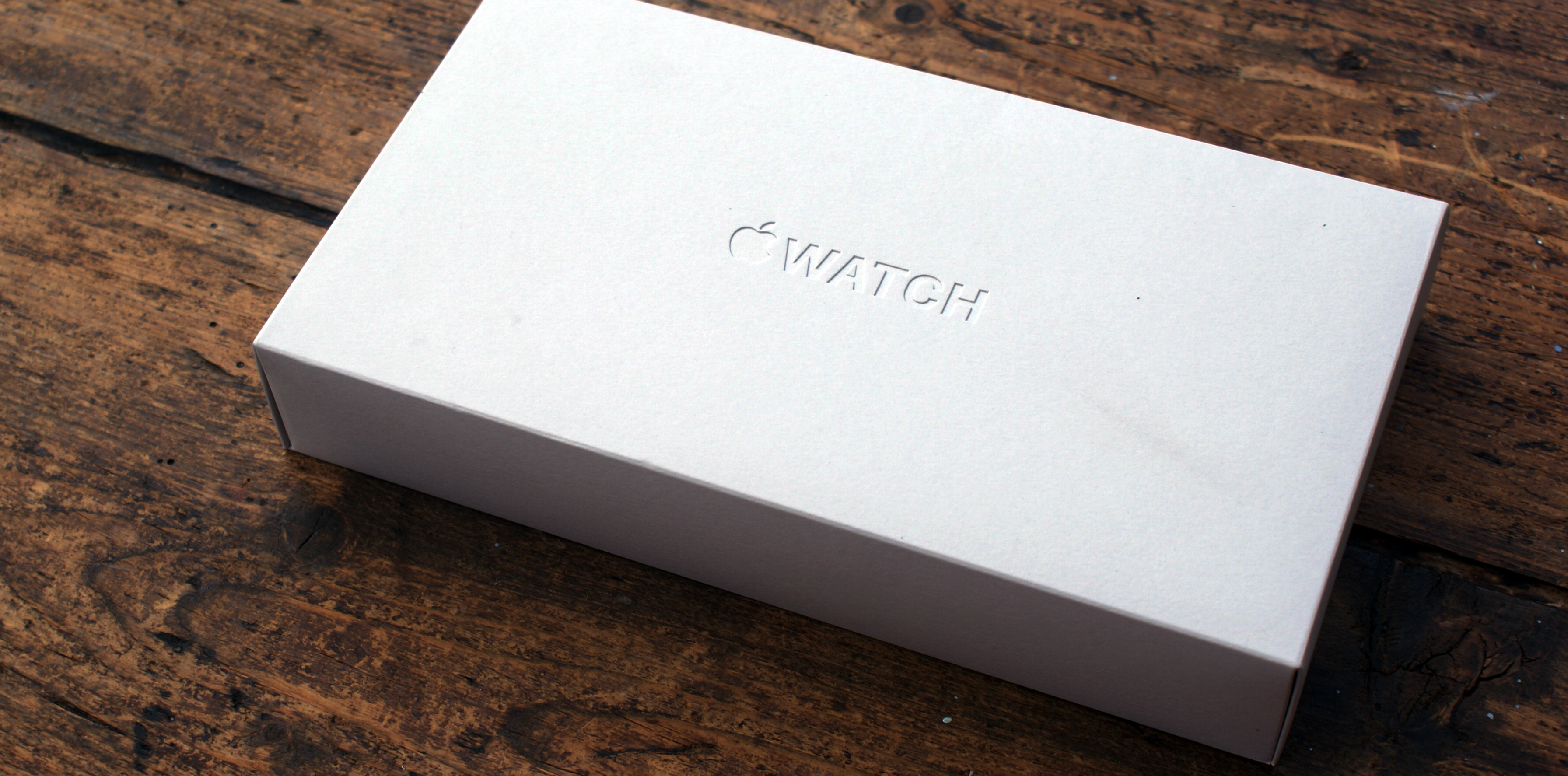
And the big upgrade that we love: the Action Button on the Watch Ultra. A customizable button on the side (although not as customizable as we’d like) that allows you to physically start and stop workouts without needing to contort your fingers, it’s a big orange symbol of change that the Apple Watch was in desperate need of.
The fitness prowess of the Apple Watch Ultra doesn’t come in the functionality – all the features are available on any Apple Watch running watchOS 9 – but in the execution. The GPS is more accurate and speedy, the heart rate monitor seems to be dependable. The battery life is longer and thus can support more extreme runs.
There’s now a diving sensor too, although it’s functionality is currently limited to just plunging your wrist into water of various depths and seeing how deep you can go – although there’s more to come from more advanced diving apps in the coming months.
If you like your current Watch for run or cycling tracking, then the upgrades here won’t disappoint.
But it’s not just fitness that’s got an upgrade: the safety features are genuinely useful too. The siren won’t be used much, but the high decibel alarm will help you if you’re stuck on a hillside. The car crash detection will alert emergency services if it detects an accident.
Even the cellular functionality on board is a comfort – safe in the knowledge that if you’re ever in distress (and in range of a cell tower) you’re never going to be alone.
There’s also the myriad health functions that monitor your heart and blood oxygen – yes, they’re part of all new Apple Watches, but they still make a compelling reason to invest in the latest Watch.
However, there are some bugbears still. The lack of onboard mapping navigation is bothersome – not in terms of Maps (as that app is there) but there’s no way to track your route back using native maps support, instead relying on the compass which isn’t always the most useful.
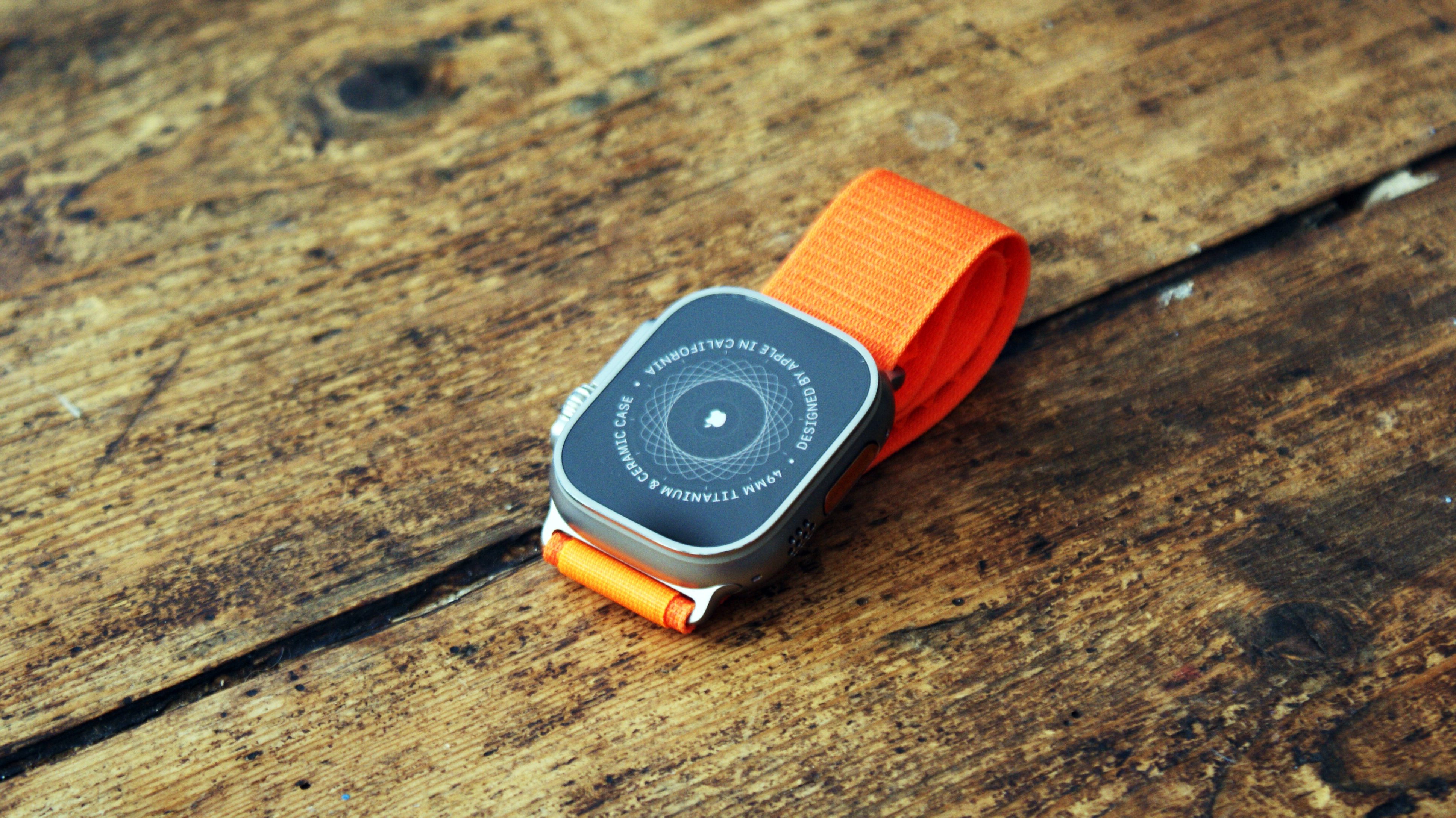
The battery life, while increased to 30 hours (and we got far more in testing) is still woefully short compared to the best that Garmin and Coros have to offer – those watches can last for days in standby mode, where Apple’s push for functionality comes at a high cost to battery life.
If Apple had managed to alter the screen technology somehow to have a truly low-power mode when not in use, and managed to get the Watch Ultra battery life up to around a week, this would probably be a five star device, even for the high cost.
As it stands, that battery issue might not be insurmountable but it’s one that’s disruptive – you’ll still need to figure out a ‘charging dance’ daily that allows you to make use of all the health tracking and fitness features without being shorn of your Watch Ultra a key time.
That aside, we’d heartily recommend the Watch Ultra for anyone that just wants ‘a really, really good Apple Watch’ – the combination of improved hardware and watchOS 9 is powerful and worth checking out.
Apple Watch Ultra price and release date
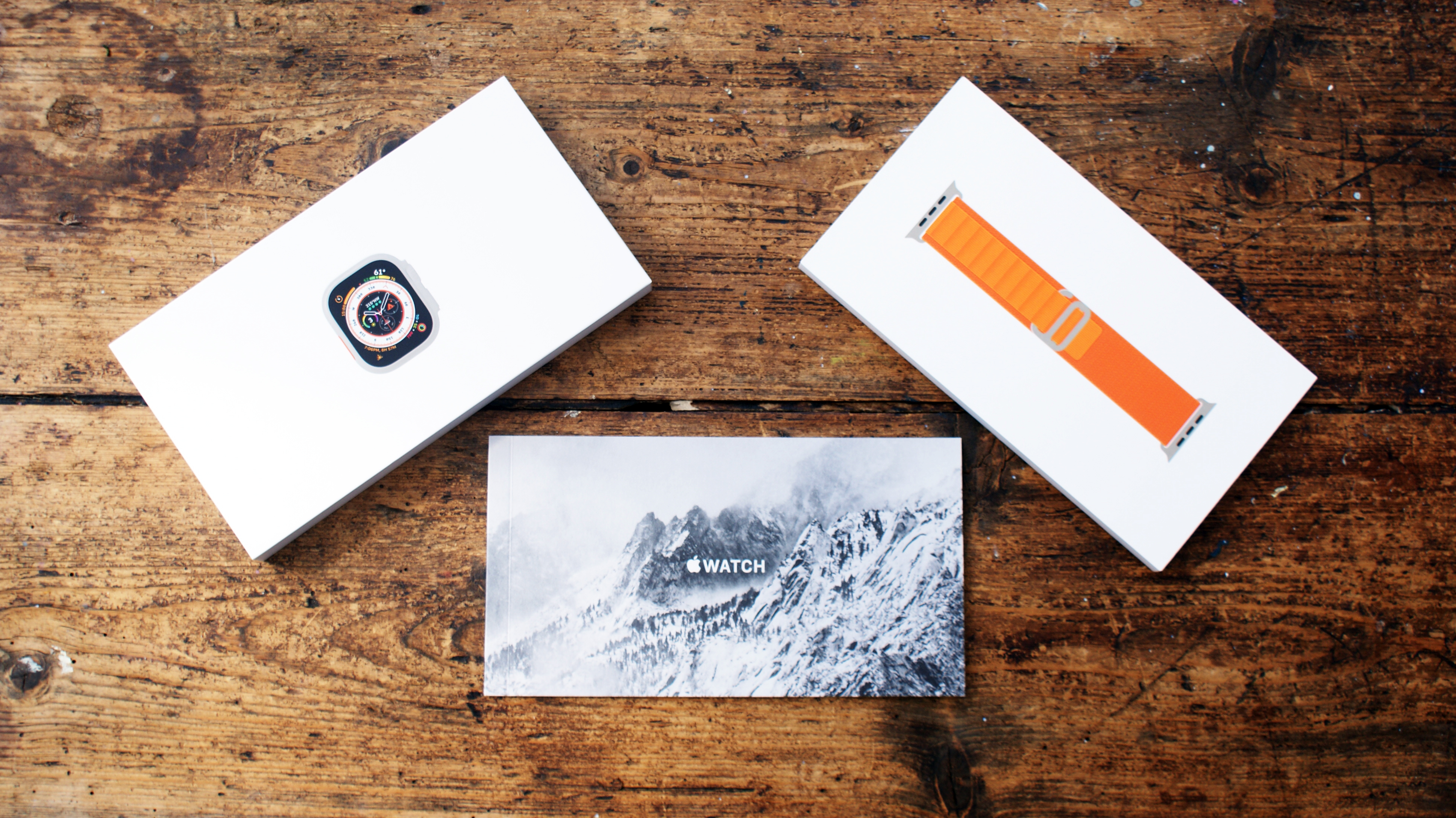
Let’s get one thing out of the way: this is not a cheap Apple Watch. If you’re interested in getting all the smarts of watchOS 9, with interval workouts, medication tracking and low-power battery, go for the Apple Watch SE 2.
But if you’ve decided that your life needs to be both super active and hyper-connected, then get ready: the Watch Ultra price is set at $799 / £849 / AU$1229. The good news is that there are no variants of this model – you choose the band, pay that price and that’s it.
There’s no fancy Hermes option, or a stainless steel, or ceramic – it’s the titanium-clad, ceramic shrouded hulk of a watch for a few hundred dollarpounds.
At least we’ve got some better news when it comes to when you can get your hands on it: the Apple Watch Ultra release date is set for Friday September 23, with pre-orders now open.
Apple Watch Ultra bands
- Comes in three styles: Alpine, Trail and Oceanic
- Can also use 44mm and 45mm straps

Before we get deep into the design of the most radically-altered Apple Watch ever, the Cupertino brand is making a big deal of the bands that you can choose with this timepiece. (Note, you can use any 44mm / 45mm strap you own or like the look of, but you have to pick one of the following at purchase).
We tested the Watch Ultra with the yellow Oceanic Band (it also comes in gray and white) – and we can’t say we love it. It looks a bit, well, Lego in its design, although it’s sturdy as heck and designed to stay put in ‘high speed watersports’. Well, if a gentle swim in the slow lane of the pool counts… then we can say that’s true.
The Trail Loop, on offer in gray with blue, black or yellow accents, is a simple slip-on and velcro strap, with lighter elastene for easier comfort. We wish we could have tried this one, as it felt super comfortable in our tests, but not to be.
The final option, which we did get a sample of, is the Alpine loop, available in green, orange and ‘starlight’ cream / white is also material but uses a hook to secure it to the fabric. This was hard to put on, and the biggest issue: it didn’t fit our wrist. These are watches for the bigger arm, it seems.
However, all three were comfortable enough in our variety of tests, and while the Oceanic Band wasn’t to our design taste, it did certainly never come off the wrist.
Apple Watch Ultra design and display
- Classy new rugged design
- Display is clear and bright
- Double the peak brightness of Watch 8
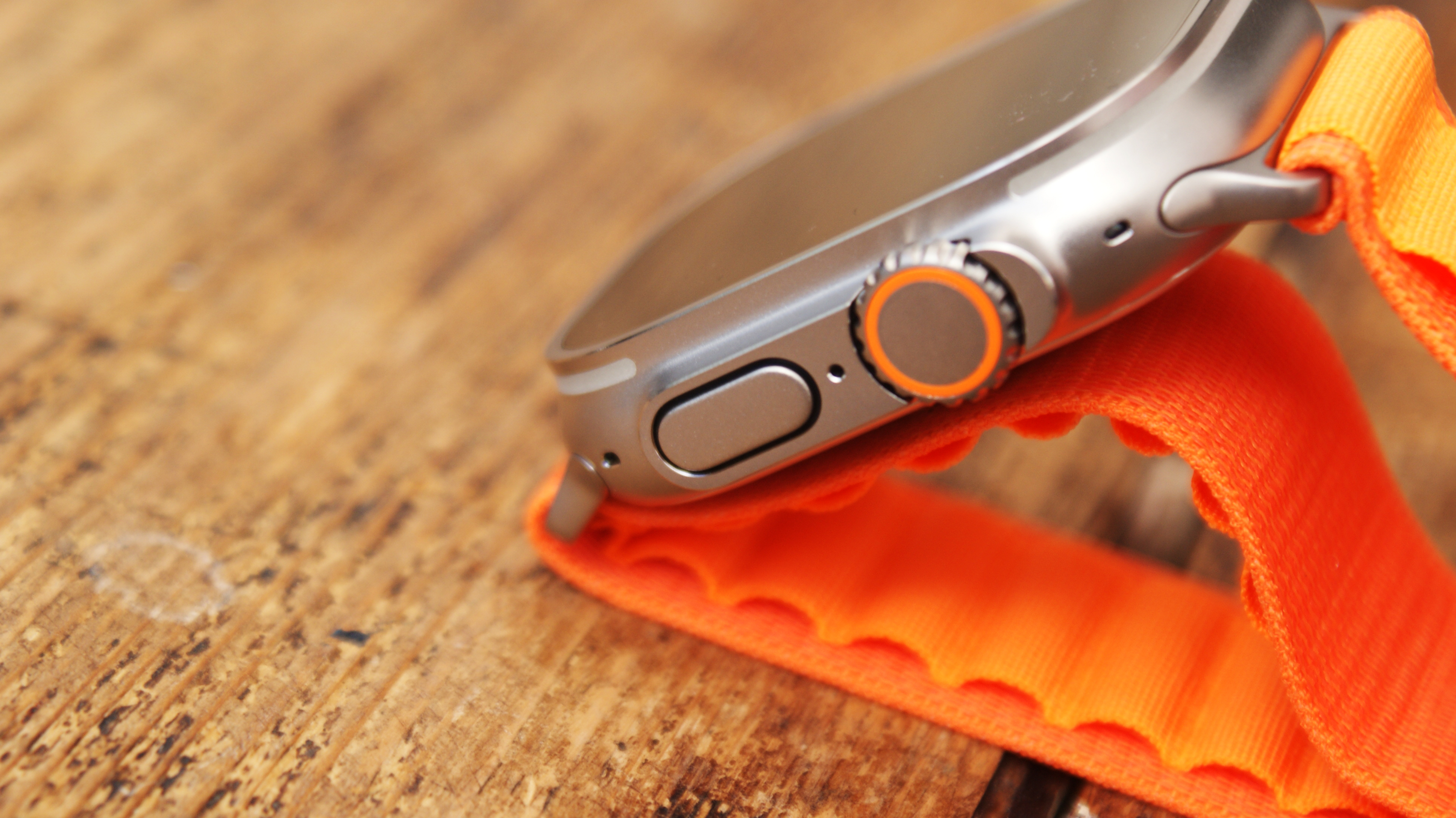
Right, let’s get onto the good bit: talking about this hulking great upgrade to the Watch design that’s been the same since 2014. The all-new titanium frame was something that worried us when we started seeing renders of it appear online in the months leading up to launch, but in reality it’s quite attractive and we prefer the rugged, metallic stylings to the sleeker lines of the Apple Watch 8.
The first thing is that his is a 49mm Watch, with the much larger, nearly two-inch display sitting larger and prouder on the wrist. If you’re used to the smaller Watch, or are upgrading from the Watch 3, the Ultra will feel gargantuan and a little heavy to start with. However, we got used to this extra size and heft so quickly, and the trade-offs are worth it.
The Digital Crown and Side Button on one side of the Watch Ultra have been beefed up somewhat, with both being encased in metal to make them more rugged and resistant to damage when being bashed about.
The spinning Digital Crown is larger with bigger ridges, designed to be used with a glove. While it is easier to interact with this element, the oversized nature does rub into one’s skin when spinning it on occasion, which is annoying.

The Watch Ultra display is raised a small amount from the main body of device, with small plastic strips under the screen at the top and bottom – this adds to the rugged look of the new Watch, but it also allows for improved GPS performance through the metallic shell.
On the other side of the Watch Ultra is a new button – the Action Button to be precise. This is designed to be a place to start runs, activate workouts, turn on the torch… it’s customizable and also allows for more precise starting and stopping of a workout too.
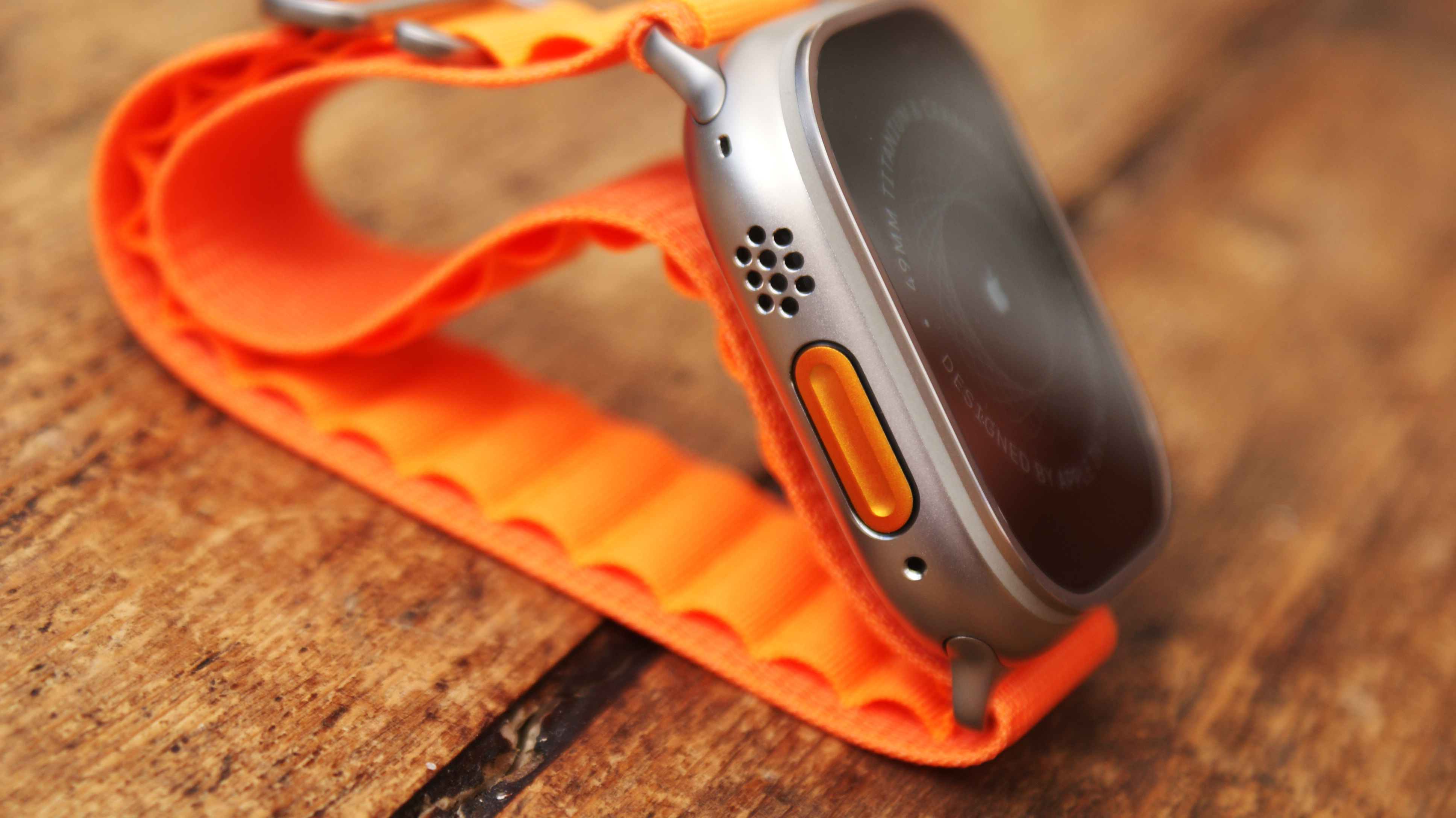
One of the things we really like is the Action Button makes pausing a workout so much easier – before you either swiped the screen (hard with sweaty or wet hands) or pressed the Side Button and Digital Crown together… which could be a bit of a contortion.
Now, you can code it so the Action Button begins a workout (yes, finally – something that seems so obvious yet took this long…) and then pressing it with the Side button on the opposite edge of the Watch Ultra will pause. It’s simple, effective and a lovely natural movement.
We would prefer it if the Action Button was a bit more customizable though: you can only set it to open workouts, start a dive, open the torch, start a stopwatch or use the compass features – you can use it to start a Shortcut (a set of pre-defined actions using apps on your iPhone or Watch) but they’re very limited too, when they could be so much richer.
The same side as the Action Button houses the all-new speaker and microphone holes – the sound that emanates from the Watch Ultra is 40% louder than on the Watch 8, and there are now three beam-forming microphones, which means they’ll adjust to remove noise and take the sound from the best-performing microphone when making phone calls.
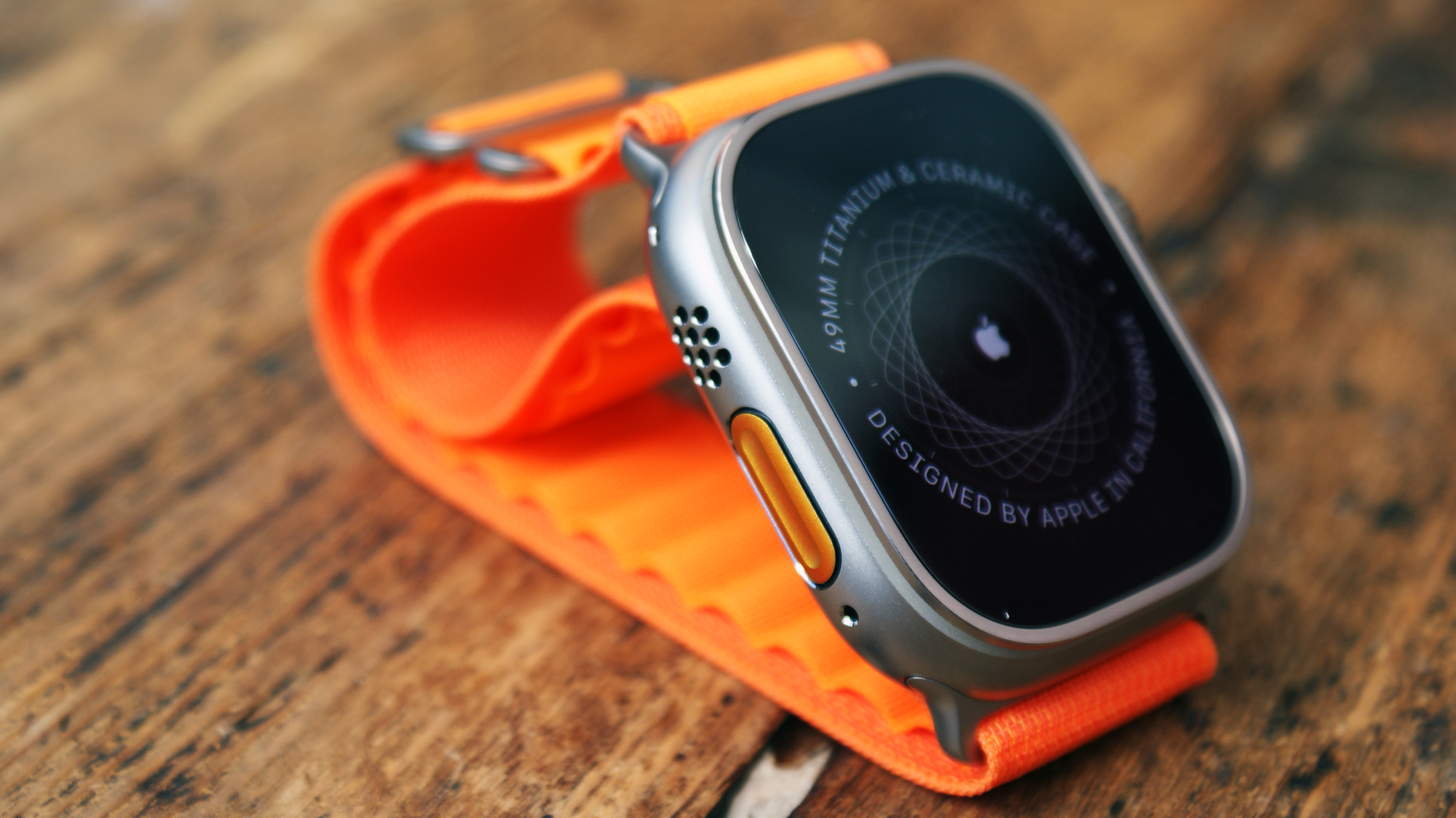
We tested this by making a call by a busy road, with traffic rushing by and the person on the other end being by a noisy air conditioner. Even though the Watch Ultra was in such trying conditions, our voice could be heard clearly and cleanly on the other end of the call, and the speaker gave a good enough performance so that we could hear their responses.
Apple’s reason for this improvement is when you’re in more hostile conditions (the example on the launch video was of someone lost in a snowdrift) but this is easily the best voice capability from any Apple Watch.
That said, most of the time you’ll likely either have your phone or a pair of AirPods or similar around, where you can use those for calls instead, so it’s not as if these watch microphones will be pivotal all the time.
In terms of the display, Apple has boosted the peak brightness of the Watch Ultra’s screen to 2000 nits – this means it’s twice as bright as the Watch 8 (and previous Apple Watch models, as the brightness hasn’t increased for a while) and it really shows.
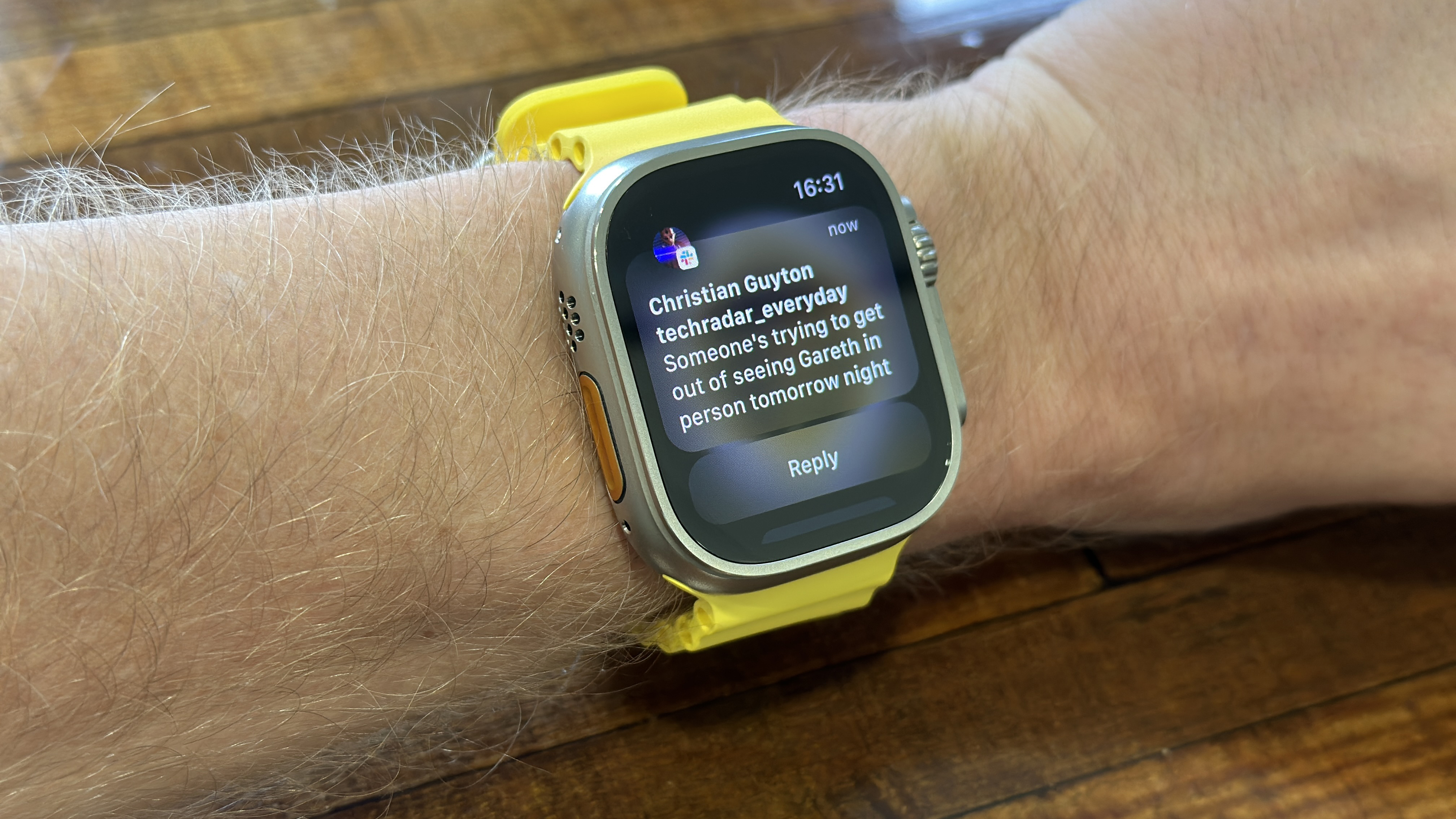
The screen, a flat, large and clear surface on the wrist, was always very easy to see in whatever conditions we thrust at it – both bright sunlight and darker moments, it was easy to read what was on the screen.
Apple has taken this opportunity to increase the amount of information it can show during Workouts, and while it’s nice to have more metrics, it does make things a bit congested. It’s nicer when you just have a few key stats to look at, so editing it down to just have the things that matter to you will make it even easier to see things on the Watch Ultra when working out.
The Always On display doesn’t seem to have been altered despite the rise in maximum brightness, but it’s still legible from any angle you glance at, thanks to the OLED display inside providing the colorful and contrast-rich images.
One of the features Apple showed off during launch was the ability to spin the Digital Crown on the home screen and go into a cool black and red version of the watch face. Sadly, this is only in the Wayfinder face that’s exclusive to the Watch Ultra – it’s nice, but it’s a shame that it’s not across all faces.
- Design score: 4.5/5
- Display score: 5/5
Apple Watch Ultra fitness and health tracking
- Much improved GPS
- New interval training options
- Diving addition needs more work
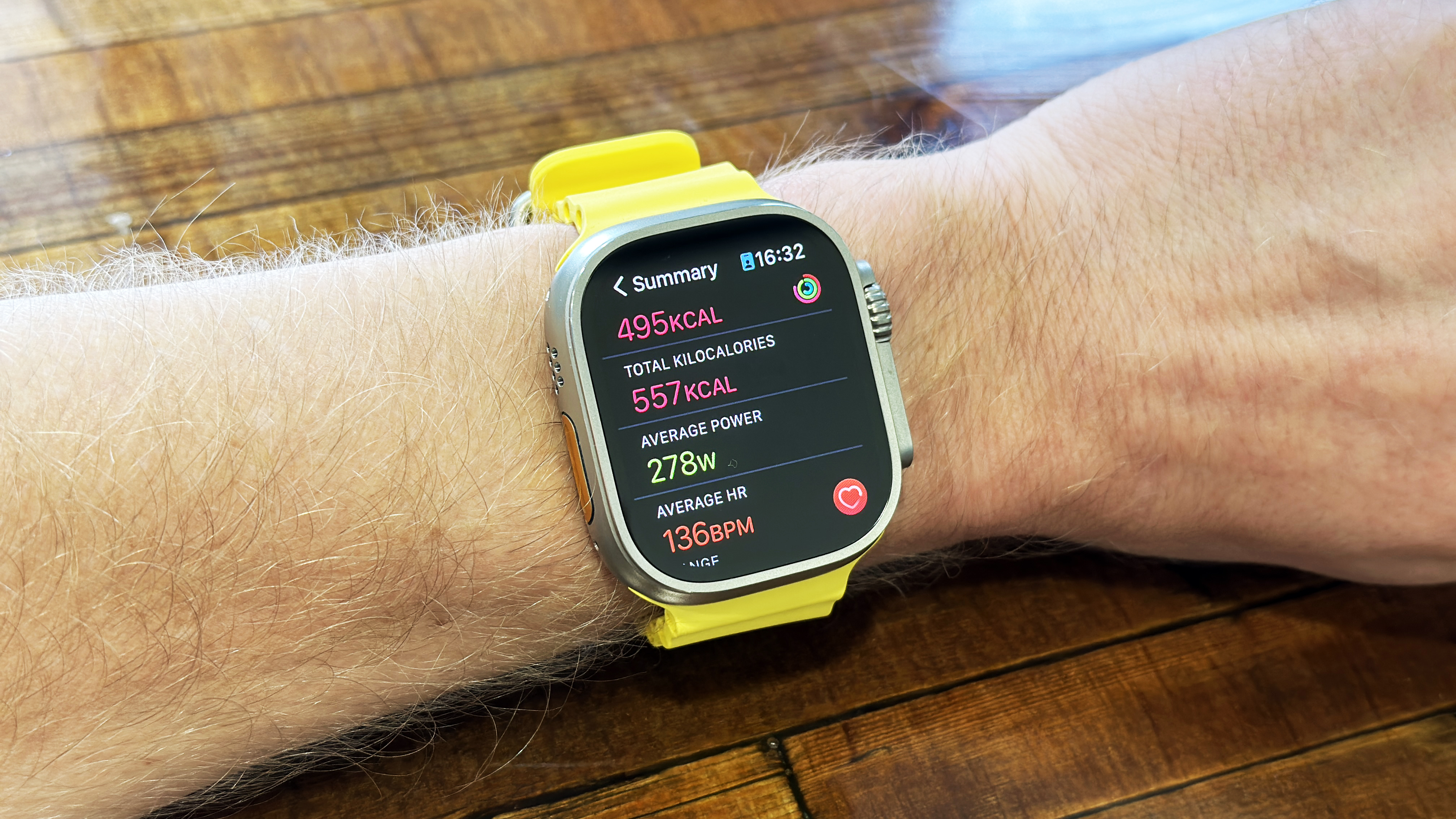
While Apple’s timepiece has always had fitness tracking as a big reason to buy it, such as run tracking and monitoring activity, with the Watch Ultra it’s kicking that up a few notches.
There’s now better satellite tracking for more accurate run distances, a larger battery for longer runs, better monitoring of transitions between triathlon sections and a depth sensor to give you info while diving.
The goal is to make the Watch Ultra attractive to those that really want their watch to keep up with their active lifestyle – whether you’re a runner, diver, surfer, hiker or triathlete, Apple wants you to feel like this Watch will be enough.
With this in mind, we strapped the Watch Ultra on for a week and took it for a variety of runs to see how it performed compared to the dedicated running watches – the likes of Garmin have been improving their smartwatch capabilities to the point that they’re brilliant daily companions (something the Apple Watch was always great at) so Apple needs to become a fierce fitness rival to compete.
One of Apple’s big claims with the Watch Ultra is that it’s going to offer the best GPS tracking performance in dense, inner-city environments, so we set off to central London to test this theory.
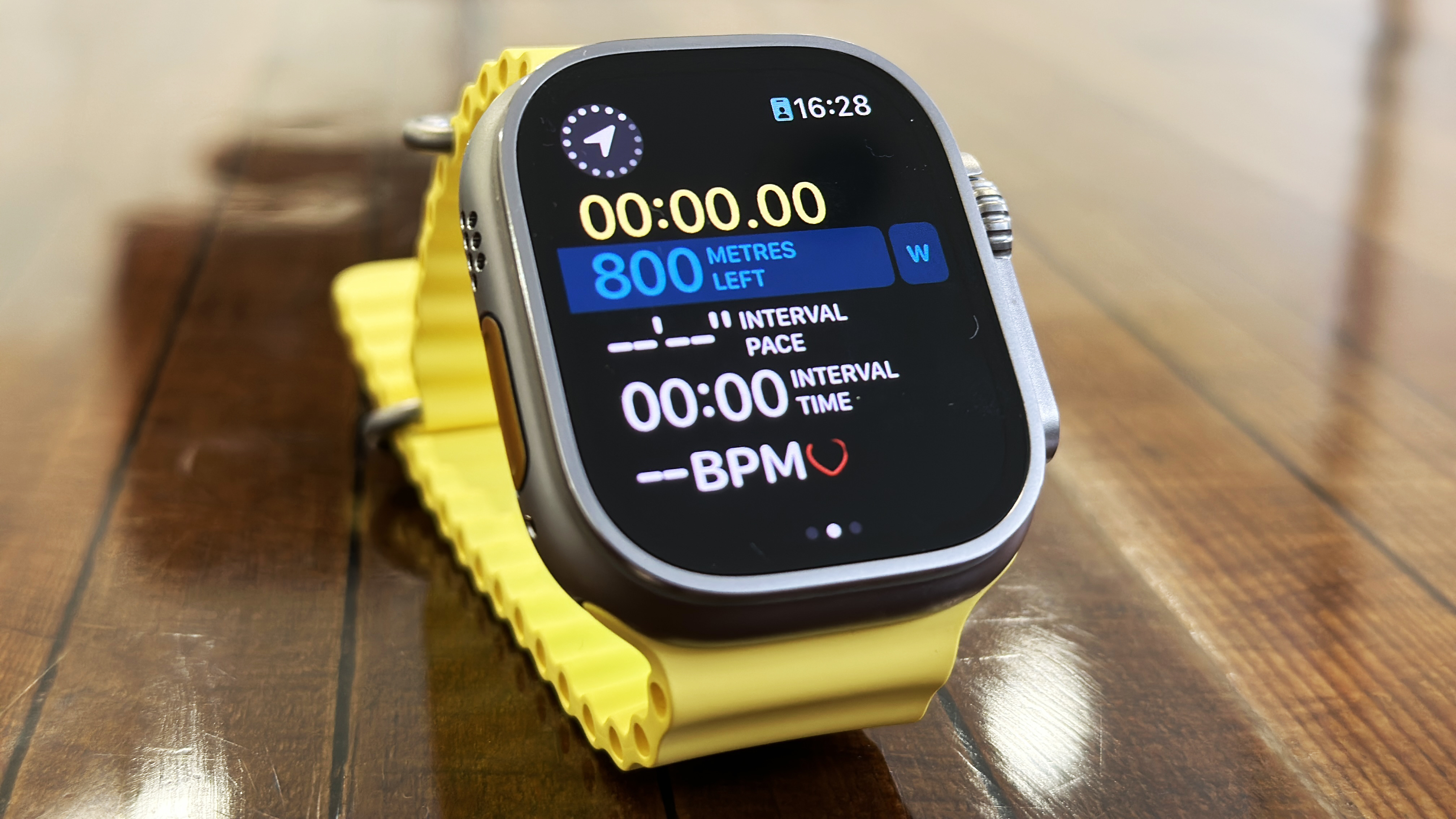
Apple added more frequency bands (GPS L5, in addition to L1 that most watches already use) which is meant to be better at being picked up in dense, urban locations. In addition to this, Apple is using machine learning, data connections (on the phone or from your cellular connection) and your stride length to make better ‘guesses’ as to where you are, designed to stop it looking like you’re running through a building or across a lake because the GPS connection has dropped.
We pitted the Watch Ultra against the Garmin Fenix 7X Solar, which has multiple bands of satellite navigation and should be able to track us as well. (Garmin claims that this model also can pick up the L1 and L5 frequencies, but we couldn’t find the setting to enable ‘multi band’ mode in the menu, so it doesn’t appear to be on thai model).
After a four-and-a-bit mile run haring around one of the world’s most densely-populated capital cities, the Apple Watch Ultra and Fenix started to spread apart, the Garmin triggering new lap alerts sooner than the new Ultra.
Examining the route afterwards, it was clear that the Watch Ultra was more accurate. While there were a few moments where apparently we plunged through buildings, most of the time it tracked us to sidewalks even under heavy tree cover, or spotted us changing sides of the road.
The Garmin, while mostly accurate, didn’t manage the same. While you could see some smarts being applied to best-guess our route, it would still jump us from side to side on a road, or skim through buildings more readily.
The most stark example of the difference between the Watch Ultra and the Fenix 7X was going through an underpass: the Watch Ultra spotted the lack of GPS and switched to accelerometer (although you can see it wondered where we’d gone before entering the tunnel).
The Fenix 7X just threw a wobbly and didn’t pick us up for a few dozen meters, adding a fair amount of distance onto the run. While both were accurate enough for an inner-city run, we’d always default to the Watch Ultra if going for a fast time through a dense, built-up area or with plenty of tree coverage.
While we’re talking about satellite tracking, we should highlight the new feature that Apple, after 8 years, has finally put into a Watch: a GPS lock indicator.
This is something that we’ve been crying out for, as it means you can start a specific distance knowing that if you’re trying to be exact, there’s no guesswork involved from the Watch. Sure, it’s a good thing that Apple allows you to just get working out if you need to rather than having to wait for a lock, but it’s what’s held the Apple Watch back as a fitness tracker rather than being seen as a dedicated, useful running or cycling watch.
And the connection is quick, too. If you’re using the Watch connected to a phone (or using cellular connectivity as we were) then it took under 10 seconds – beneath a tree – to get a lock. The Garmin Fenix 7X wasn’t connected to anything, although does have some ‘memory’ of this area (which brings a quicker lock) and managed it in around 16 seconds.
Speaking of Apple’s elevation to a ‘proper’ running watch, the addition of interval training is a big deal: you can now set up a session where you’ll divide it into a number of quicker and slower sections, so you’ll know you need to push for a set amount of time before getting a recovery.
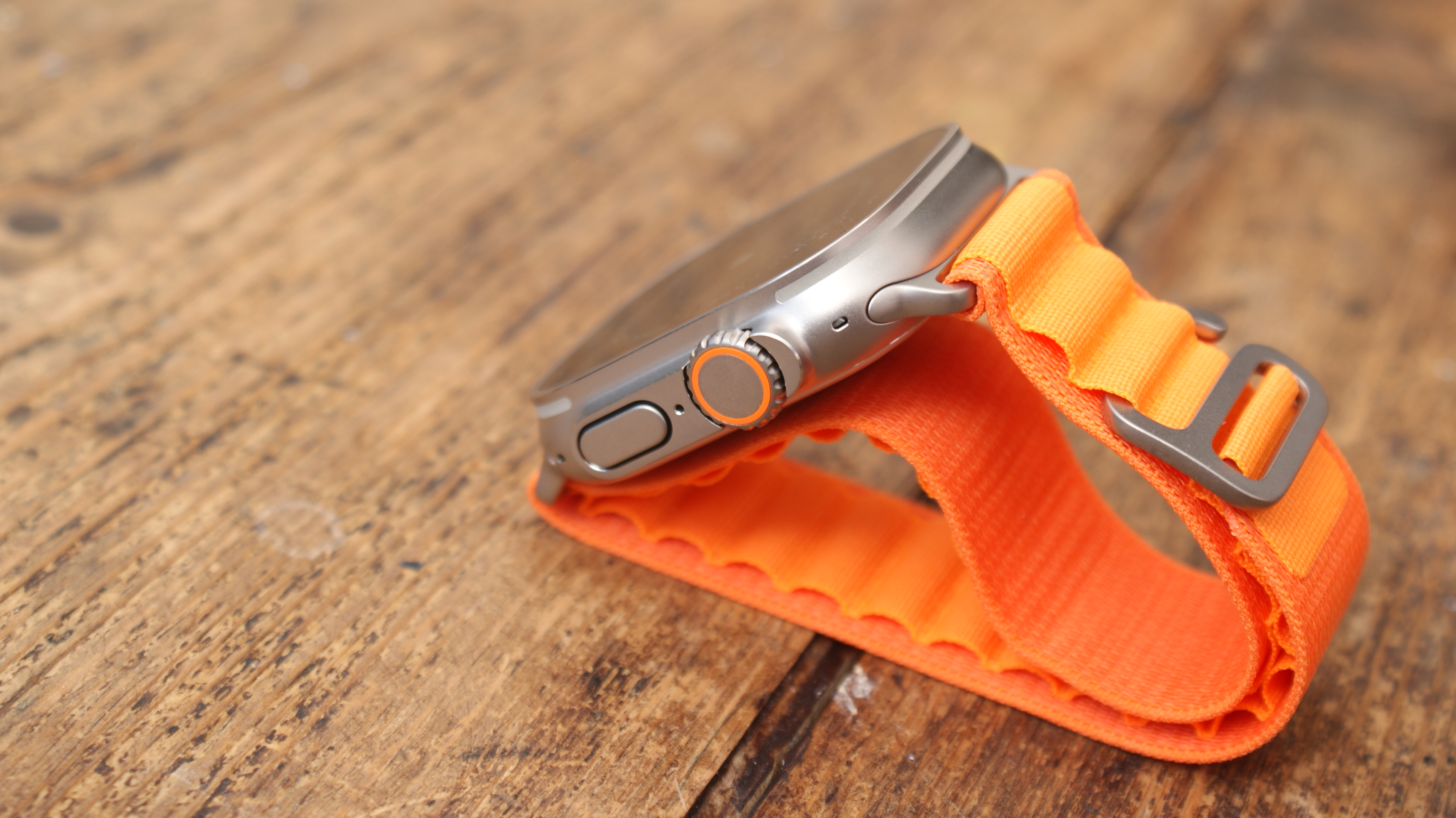
This is a key feature if you’re looking for big improvements in your fitness, and something that again elevates the Apple Watch from something for the casual runner to a device that a more dedicated runner could use. Admittedly, it is coming to all Apple Watch models that upgrade to watchOS 9, but it works best on the larger screen and with the Action Button, which allows you to skip through sets if you want a shorter recovery.
Where it still misses out is the ability to set targets within those intervals: you can’t set a pace or heart rate target during these sections, rather just the Watch Ultra telling you that you need to push for a set amount of time and then slow down again at preset intervals.
While the user interface to see how far you have to go between sets is good, we really missed this during our testing. Being told ‘speed up’ or ‘work harder’ to get the pace or heart rate up is the thing that pushes a smartwatch from dumb companion on the wrist tracking things to a virtual personal trainer.
Given the easy connection between the Apple Watch and a set of AirPods, which connect seamlessly and will provide audio feedback during your workout, this would have been a nice upgrade to see.
However, we were impressed with the Watch Ultra during a longer run – pumping out a 90 minute jaunt by the seafront, where changes in elevation were minimal and the sky clear for GPS, saw a well-tracked run with good audio prompts each mile letting us know our current pace.
Also, the heart rate monitor on the Watch Ultra is right up there in terms of accuracy – it benched perfectly against everything we were using, and consistently rose and fell with effort and recovery.
While the wrist is a terrible place to monitor heart rate, we had huge confidence in what Apple’s now managed with the Watch Ultra – that’s a far cry from some of the earlier Apple Watch models, which seemed to be almost guessing at times.
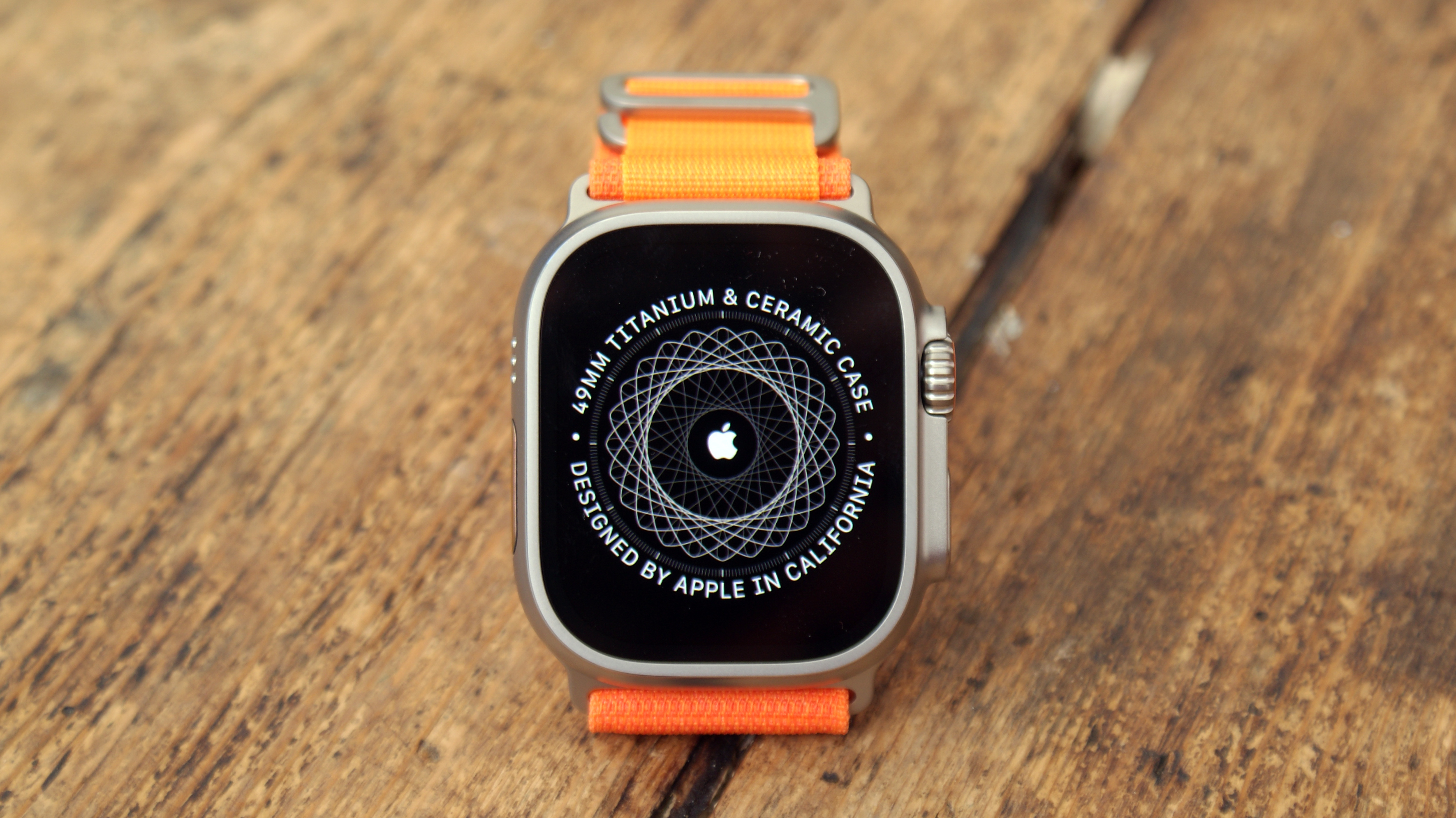
Back to the longer run: we were using the new ‘virtual pacer’ function here, where you add in a distance and a preferred time or pace, and the Watch Ultra will tell you how far ahead or behind of this ghostly other runner you are. It’s something we’ve seen on other devices for a while and it can be hugely motivating – while it’s taken too long to come to the Apple Watch for our taste, it’s a great feature to finally see.
The Action Button has also enhanced ‘segments’ on the Watch (which most users of other running watches will recognize as ‘laps’), where you can now press the large orange button to start a new section of your run.
This is useful if you’re doing track laps, want to do some fartlek training (meaning ‘speed play’ in Swedish, where you’ll run faster and slower as you decide) or just have a faster section of your run you want to regularly pace yourself again.
While this feature is already available in watchOS 9, being able to press a button without looking at the watch face is a game-changer for Apple Watch users – the Watch Ultra really does become a very different device with this single extra button.
Watch Ultra: other fitness
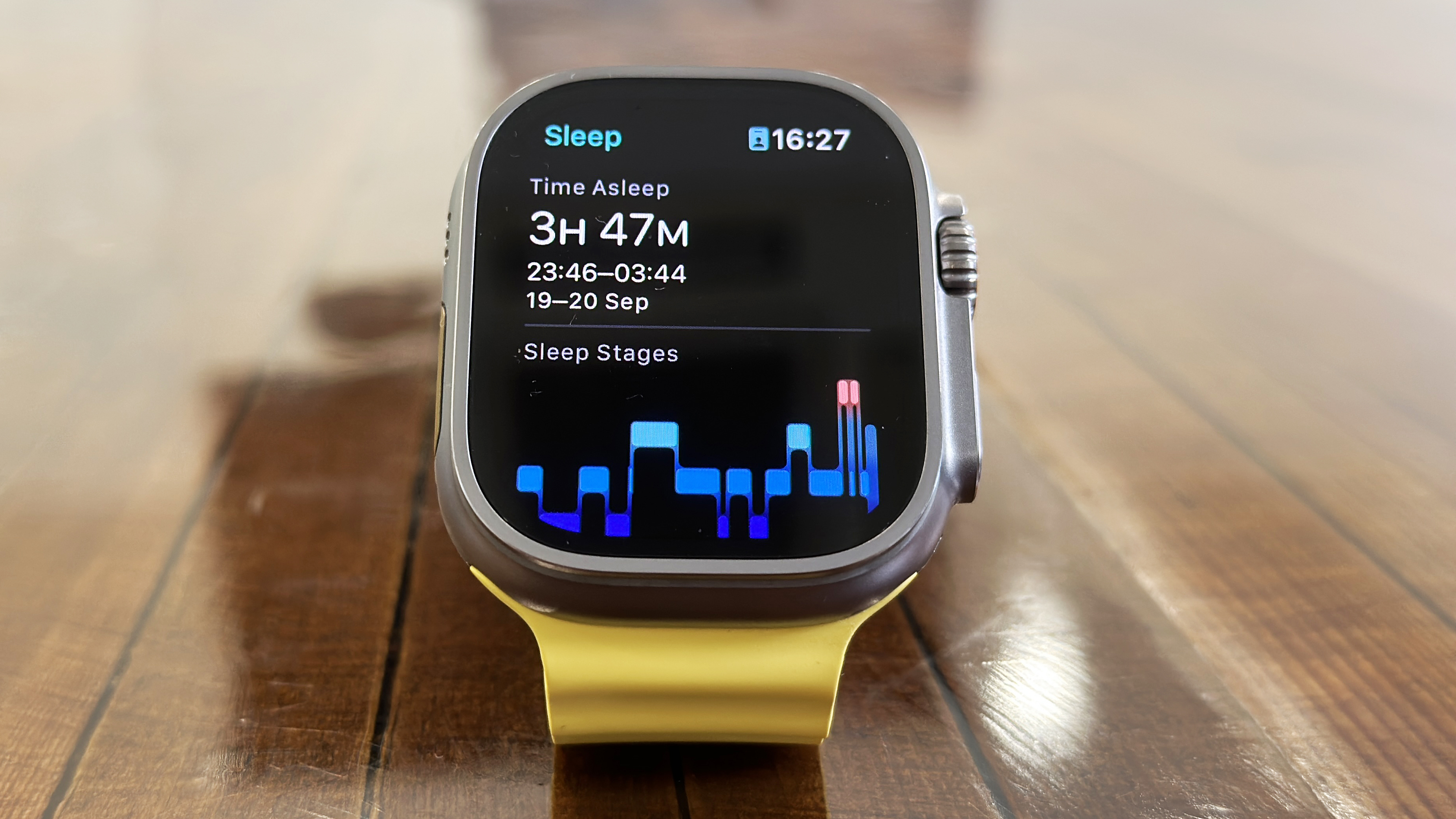
Let’s not get too caught up on running though – there are myriad other things the Watch Ultra can do, albeit the same things that can be achieved on any Apple Watch.
But given the extended battery life of the Ultra, you’ll find yourself pushing a little bit harder to close your fitness rings – burning calories, minutes exercised and standing regularly – nd you can do that through a number of workouts.
Whether it’s doing some Yoga with Apple Fitness+, dancing with family for a bit too long or cycling hard to the station when late for work, these can all be added in (and in the case of outdoor walking or cycling, the Watch Ultra will spot when you’ve been doing these and alert you to start tracking).
None of this is new to the Apple Watch fitness ecosystem though, so all you’re getting is a bit longer to achieve your goals before needing to charge the Watch up again.
One thing that hasn’t improved and needs to: swimming. When testing the diving functionality below (which basically constituted holding breath under water and falling to the bottom of the pool) we re-tested to see if swim tracking was any better on the Watch, as in previous models we weren’t impressed.
Sadly, it’s not much better at tracking our exploits in the pool. A five-length swim, punctuated by a couple of stops of over 10 seconds, didn’t track properly, coming up as just two lengths, despite noticing how far we were swimming (so you’d expect it to have spotted a change in direction).
At the same time the Garmin we were tracking against managed to log five lengths with no issue – so it wasn’t the motion, just that the Apple Watch Ultra’s swim sensitivity still isn’t as high as we’d like.
Diving
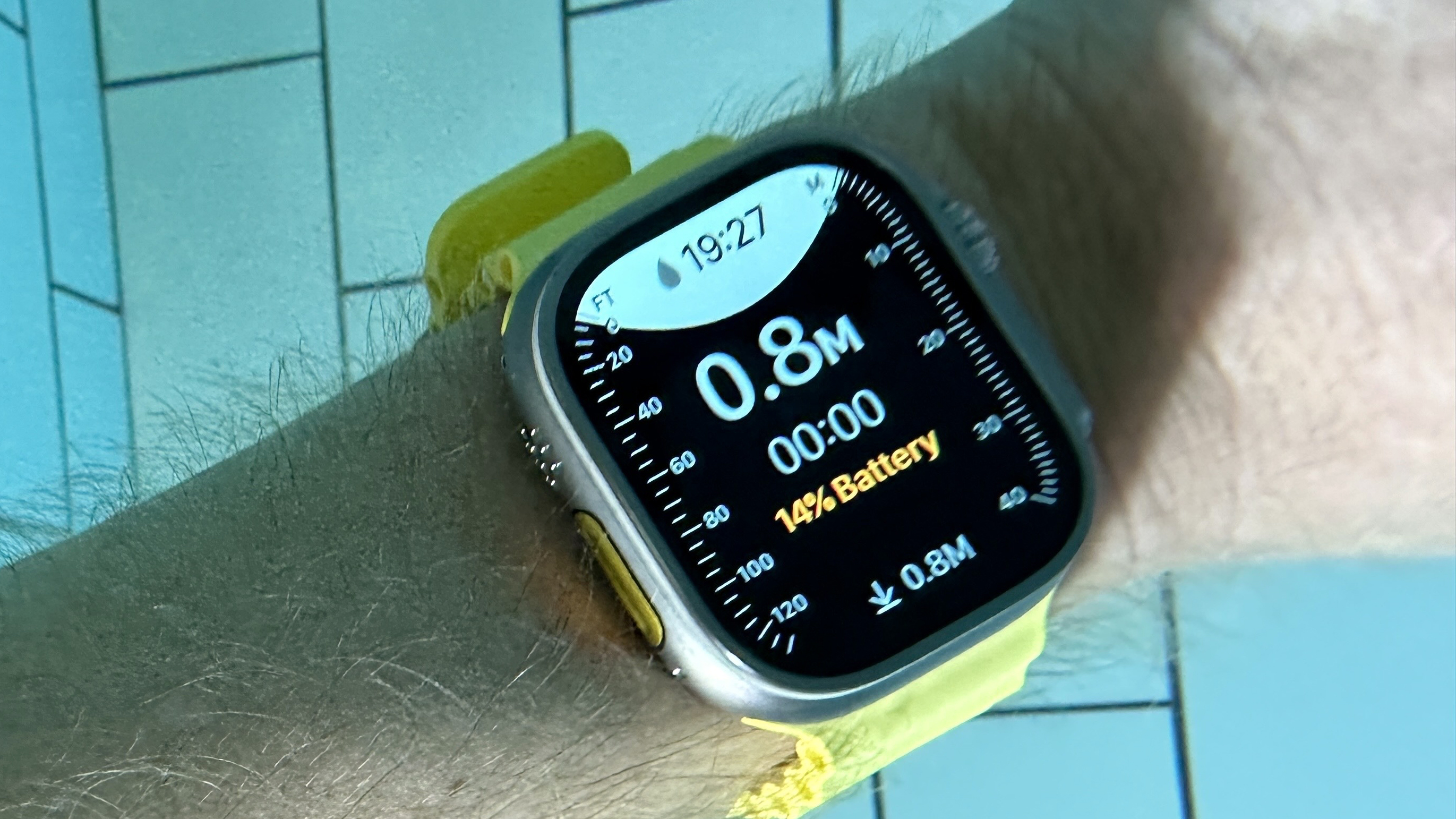
Apple’s been making a huge deal about the new diving sensor inside the Watch Ultra. With the new device, you’ll be able to see how deep you’re going, how long for and the temperature of the water.
A good feature, yes? Well, sort of. Much like the running community, there’s a large section of divers who want a really integrated, detailed diving computer on their wrist that can alert you to depth warnings, compression alerts, monitor gas mix etc.
Currently, what Apple’s got is a function that will activate when you go underwater and will just tell you how deep you went and for how long. While it works really well (in the limited 1.75m pool we splashed about in for a bit) in terms of telling you how deep you’re going, that’s about it.
There’s no detailed ‘dive’ view on the Watch or iPhone when you’ve finished your session – just how deep you went and for how long.
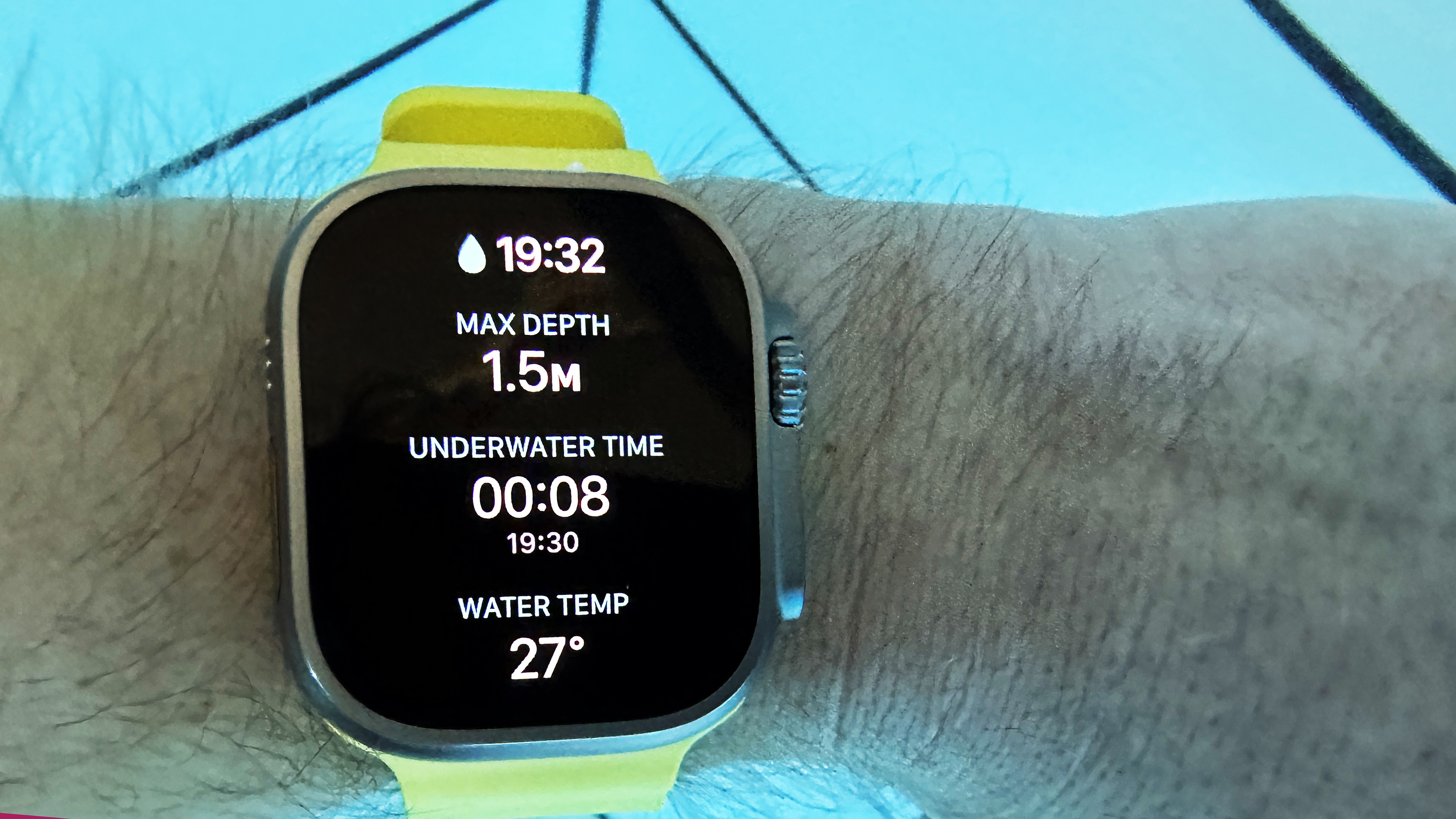
There is a new app coming called Oceanic+, which will bring all manner of ‘deep dive’ features for your diving session, such as more info on gas mix, decompression steps and more – this is far more what people will be looking for.
But this is going to be an extra cost, and it’s strange that it’s not available at launch. And you still feel that anyone beyond the infrequent diver will want to invest in a dedicated dive computer: something like the Garmin Descent Mk2 has all the same running and fitness metrics, but can connect to air tanks and features a detailed set of diving info as standard.
It’s hard to see what Apple’s angle is with diving on the Watch Ultra, but if you’re someone who might dabble from time to time, or just likes getting in the pool and seeing how deep you can go… this is for you.
Health
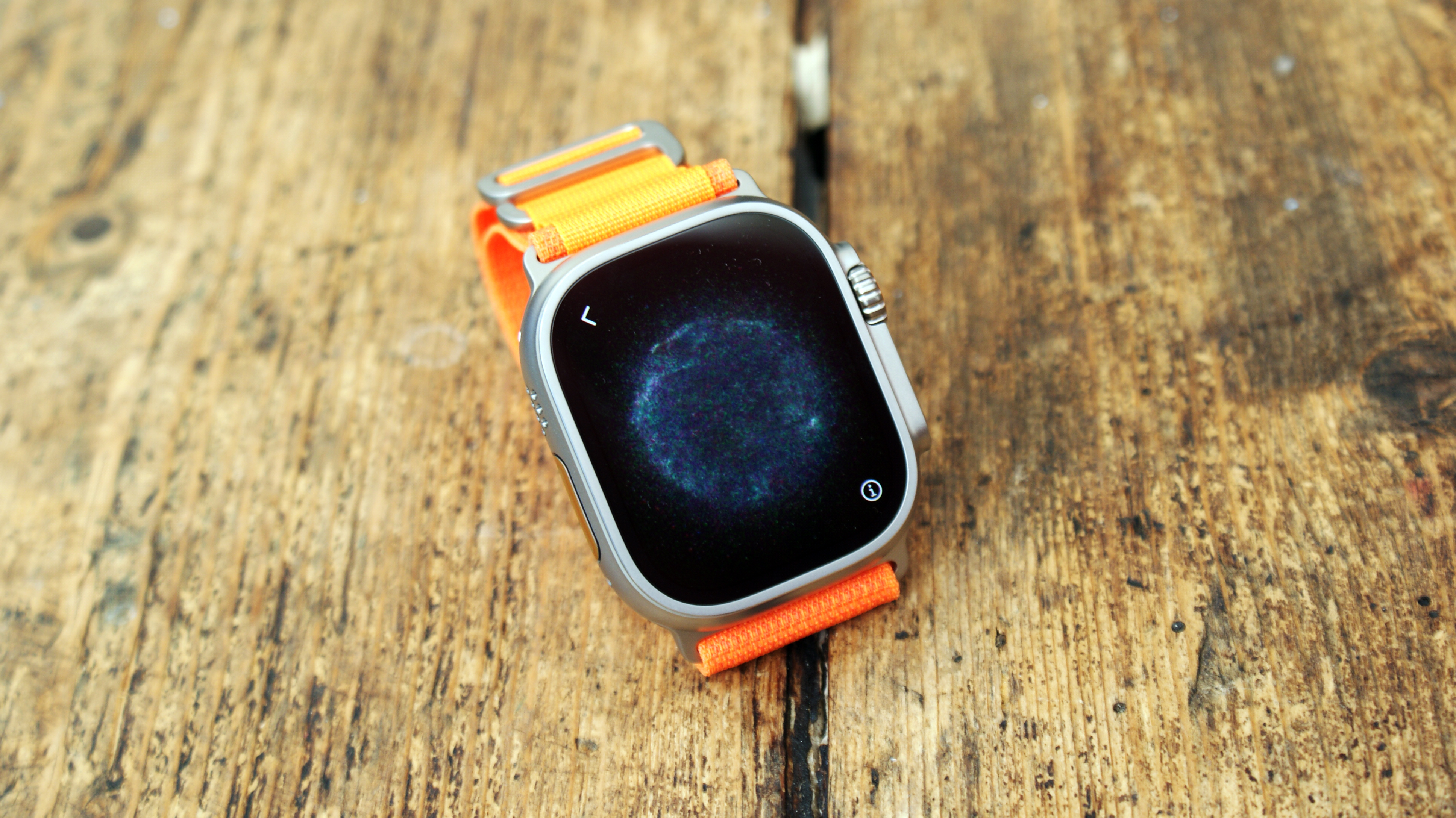
The Apple Watch Ultra brings the same feature set as you’ll find on the Watch 8, but with a slightly longer battery.
So that means the same things we liked about the Watch 8, such as monitoring ambient conditions for excess or increased volume and reminding you to protect your ear health, are present and correct, and a great reason to invest in the Apple ecosystem.
While most people won’t ever use the ECG or blood oxygen monitor, their very presence is reassuring. While Apple is obviously going to talk up the lives saved by having these monitors active, spotting atrial fibrillation or low blood oxygen, the very fact that wearing this watch could save your life is a nice bonus.
We know someone who was using the Watch and suddenly got a ‘high heart rate’ notification, and went to their doctor despite feeling fine. They had an undiagnosed condition and it was quickly sorted, but it could have got a lot more serious quickly… so having something on your wrist just keeping an eye is a real boon.
The temperature sensor that came with the Watch 8 is also on the Watch Ultra, meaning women will be able to retroactively track their cycle and spot ovulations after they’ve occurred.
Anyone will be able to track their temperature too – so you can see the effects of alcohol ingestion or jet lag. However, it won’t be until other apps can start to make better use of this data will it be a useful sensor – right now, it’s only useful if you’re trying to plan a family and want to spot when you ovulated or you’re just wondering how thick your duvet really is.
Apple Watch Ultra safety features
- Siren is loud and will get attention
- Backtrack is a bit limited
- Car crash detection is welcome
One feature of running watches that most brands will make a big deal of in their GPS watches is backtrack features, where you’ll be able to follow the route you traveled on a little map so you don’t feel lost.
Weirdly, despite Apple having its own Map app, it doesn’t do the same thing, instead relying on a little compass radar to keep you in the right direction.
If you’re lost in a city, this is OK as you’ll generally be able to walk around buildings or find an alternative path if you come to a dead end, but when out running it can be really annoying to try to remember if that field has an exit or if you’re supposed to run around it.
The Backtrack feature also requires some setting up – you’ll mostly need to drop a flag or let the watch know you want to start Backtrack in order for it to function. There are supposed to be some automatic flags dropped, but they didn’t appear when we tested.
While a good compass and the ability to find your way home in the right direction is useful for hiking, it’s odd that Apple isn’t making better use of its mapping capabilities to make the Watch Ultra a mega navigation beast.
That large, colorful screen would be perfect for it, and we’ve had no issue following mapping directions on smaller screens from other watches in the past.
One feature that we do like – and is far too tempting – is the Siren functionality. This is designed so people in a 600 feet radius can hear you when you’re lost or need help, and works really well.
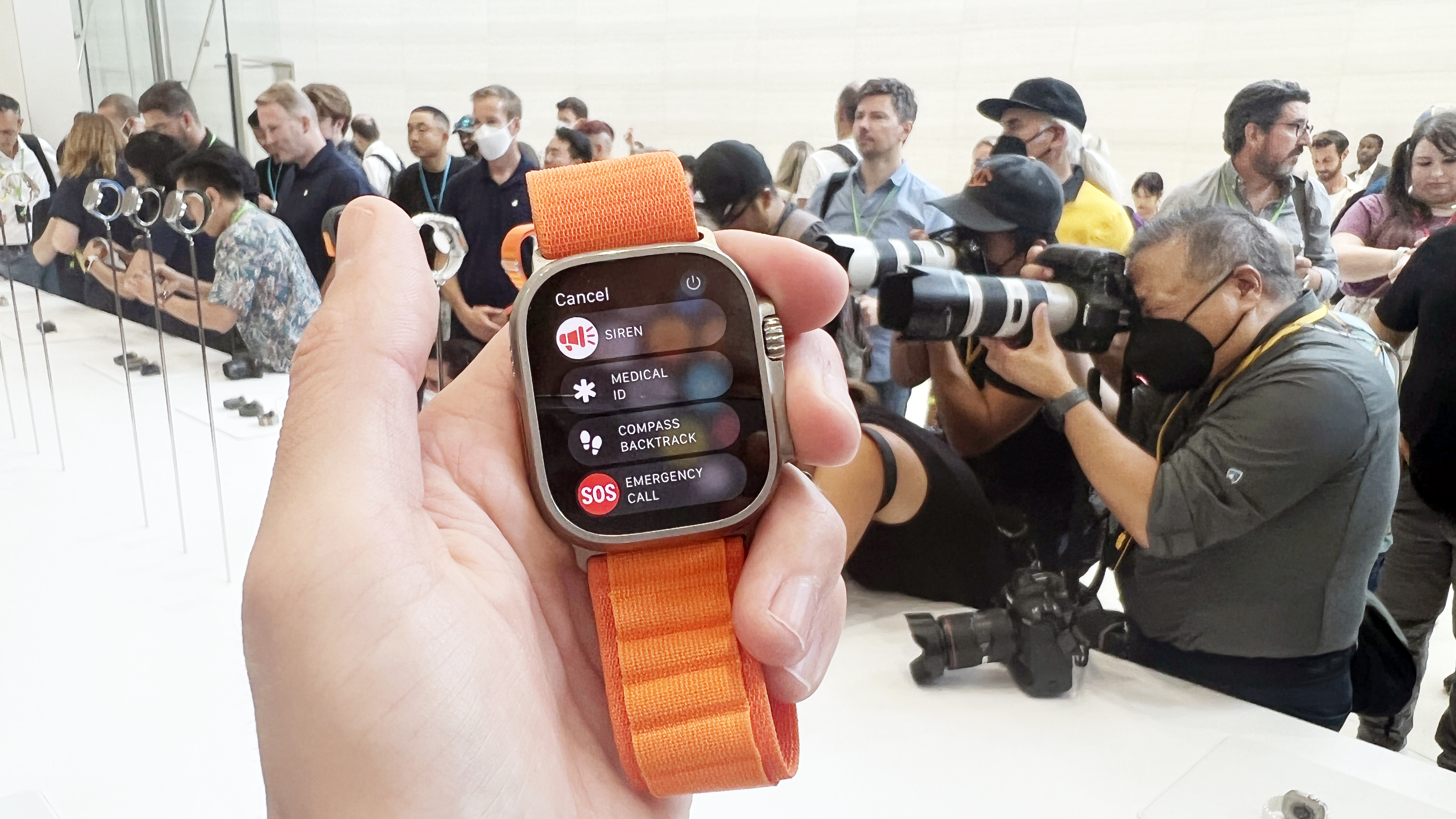
It doesn’t just blare out, but gives a series of more-urgent squawks at increasing volume, as well as moving to the SOS morse code, so people will know you’re in trouble. It’s not a feature you’ll use a lot, but it shows that Apple is really thinking about how to make this Watch Ultra a useful tool when out in the far reaches, not just paying lip service to being ‘active’.
One thing we think is often overlooked is cellular connectivity – when it first emerged on the Apple Watch, many networks didn’t support it, but yours probably does now.
It’s not cheap – often around $10 / £7 a month or thereabouts – but it does imbue your watch with so many more features. Music streaming on the go is brilliant, but being able to call or message loved ones if needed is a real game-changer – and it means you can just leave the phone at home with confidence.
(Of course, even if you don’t sign up, you can still always use the Watch Ultra to call emergency services – given you’re automatically getting cellular connectivity with the Ultra, rather than having to pay more for it, that’s another comfort).
The Apple Watch Ultra definitely walks the walk when it comes to being something that’s truly useful when you’re an active sort – while there are some weird misses (like with navigation) the thought that’s gone into things like health features (we haven’t even mentioned new things like helping monitor your medication intake) as well as being a literal life-saver if you’re lost when out and about.
However, there’s still one key issue…
Apple Watch Ultra battery
- Battery life needs to be longer
- 48 hours easily possible with multiple workouts
- Low power mode is helpful
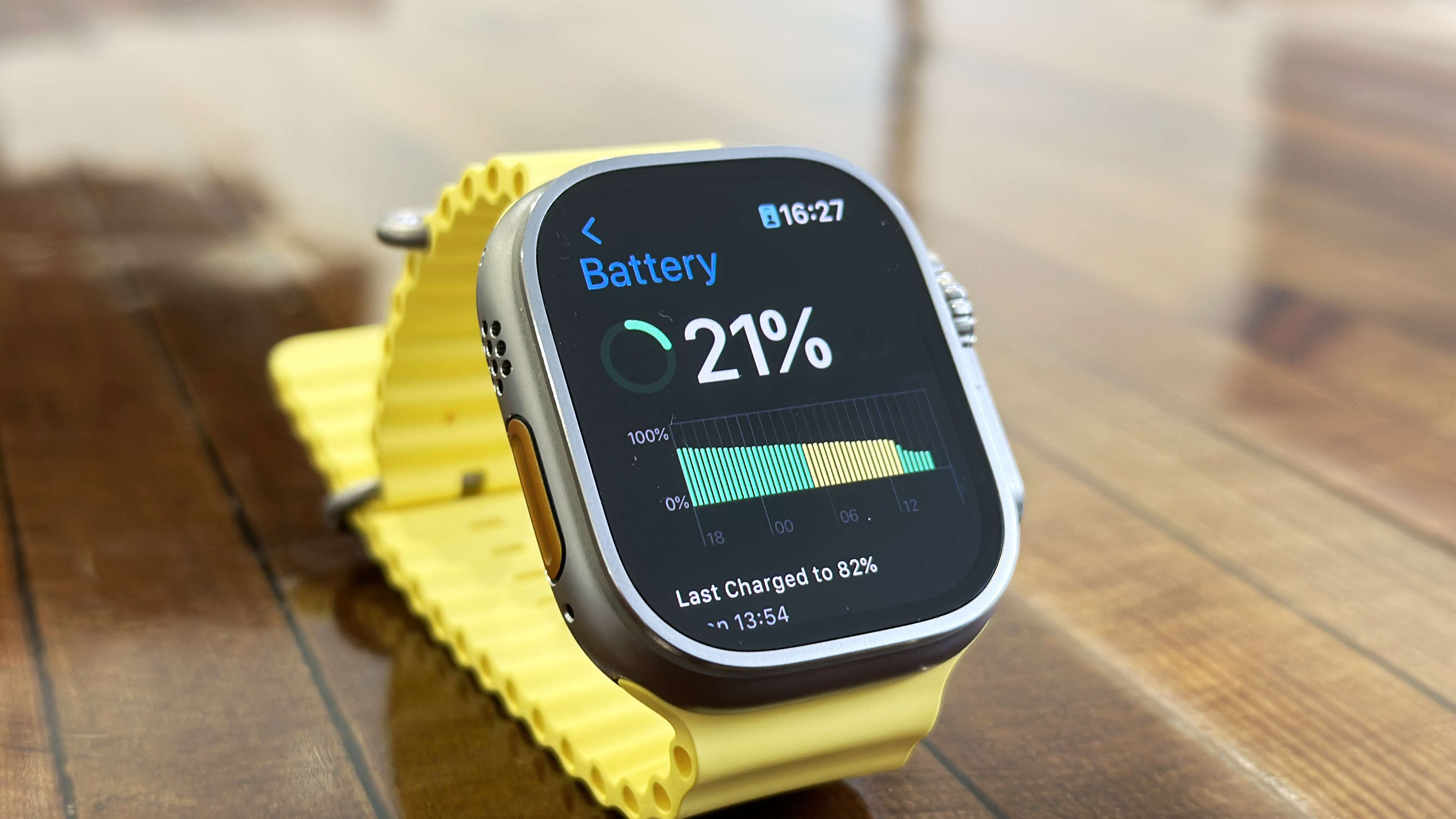
Right, let’s get onto the one big issue that Apple is still dealing with, and one that we think still needs improvement: the Watch Ultra battery life.
Apple Watches have always been OK for battery life, but mostly need a daily charge to make you feel safe, especially if you’re using the Watch to work out regularly. They’ll last between 1-2 days without needing to be juiced up, but that’s still pretty regular.
The Apple Watch Ultra can last a lot longer, with battery life moving from 18 hours on the Watch 8 to 30 hours on the Ultra – and it shows.
That means that you’ll easily get a couple of harder or longer workouts in before needing to reach for the charger – and that’s going to feel like eons for any regular Watch users.
However, the Watch Ultra is now competing with the likes of Garmin, Polar or Suunto, which can go literal weeks in smartwatch mode and track for hours and hours before giving up the ghost – and the Watch Ultra is nowhere near this level.
In our testing, we found that you could definitely get 2-3 hours of GPS running during a 48 hour period without needing to charge back up – so you can worry less about charging each day.
And during the 90 minute run, the Watch Ultra only lost 8% battery, which is a great result – it’s not too far off other running watches in that regard, so Apple’s claim that you’ll be able to use it to track a full Ironman distance seems to hold water – although, we admit, we didn’t have the ability to fully try that out.
We did spot that things descended a bit quicker during our inner-city run, losing 16% of battery life over the 35 minute jog, which makes us suspect that Apple is dynamically choosing the GPS systems to use – rather than having the high-power multiband system constantly going, it’ll kick in when more dense environments are sensed.
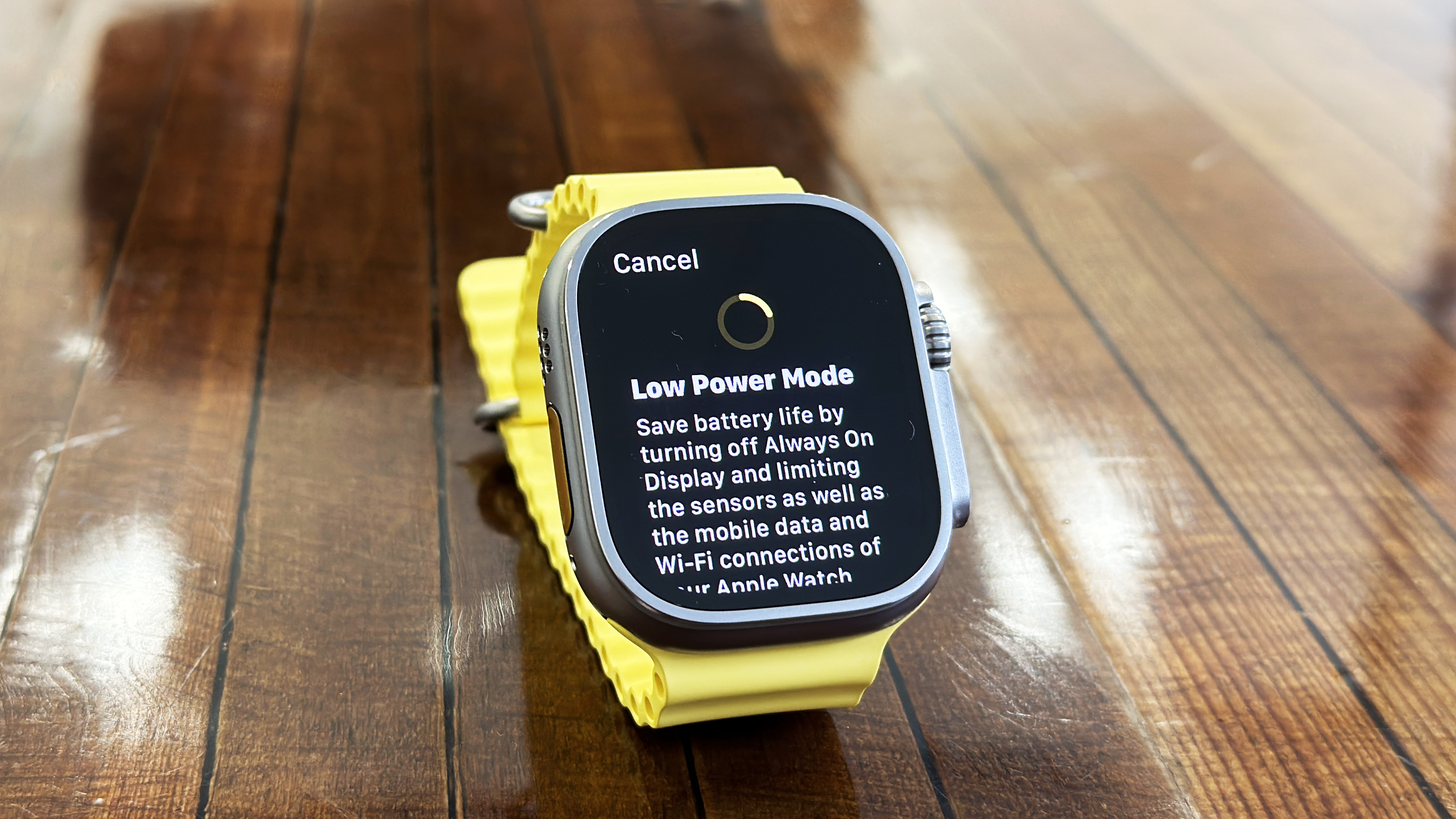
That makes sense, but something to stay aware of if you’re thinking of using the Watch Ultra mostly in city scenes rather than the open countryside.
There’s also Low Power Mode on offer for the first time with the new suite of Apple Watches, and that means it’ll go down to about 1-2% per hour on standby. This disables the always-on display, some of the heart rate monitoring and other lesser-used features if you want to extend things out further.
It doesn’t have a dramatic impact on power efficiency, but it does help a little – three days of use between charges, if you’re not streaming music, using the cellular connection or tracking exercise would be perfectly manageable.
You’ll be able to charge the Watch Ultra up pretty quickly, getting well over 70% of charge in around an hour, but it’s when you’ll be able to do that charging that matters.
The Watch Ultra needs to be worn during sleep to track your sleep (surprisingly) as well as being able to keep an eye on your base temperature. So while it would make perfect sense just to charge it overnight, that’s no longer an option if you want to get the best of all the features the Watch Ultra actually offers.
Until Apple manages to offer a watch that legitimately lasts a week between charges, it’ll be hard to truly recommend it as a proper fitness tracker that can get deeply behind your fitness goals.

There is an enhanced mode coming down the line – why this isn’t being offered now, at the launch of the Watch Ultra, is beyond us – but it will allow up to 60 hours of battery life between charges.
The example given was for hiking – you could leave the iPhone at home and the Watch Ultra would track a hike using ‘pulsed’ GPS every few seconds, and the same with the heart rate monitor – while it’s a good headline stat to offer this length of battery life, it’s not something that we’d recommend most people use for anything other than a slow meander across the mountains, as the results wouldn’t be accurate enough.
That said, the popularity and functionality of the Apple Watch means that the low battery life will remain an annoyance, not a deal-breaker. I’ve spoken to lots of Apple Watch users and they all find their own way around the issue: whether it’s charging when first sat down at work, on the train, before bed or during a shower, there are ways and means to beat this.
And the fast charging capabilities that came with the Apple Watch 7 do make a real difference – being able to get most of the way charged in an hour isn’t too bad, or constant sipping charging will work too.
However, and this is still a huge issue for us: the charging cable is USB-C, the new, slimmer USB connector… but there’s no charging block in the box. Apple says this is for environmental reasons, but very few people have the compatible plug to allow you to charge the Watch Ultra, so you’ll need to spend a little more to be able to easily charge up.
It’s not a huge outlay, but many people will unbox the Watch Ultra and realize, unless they have a new MacBook or have bought other USB-C-enabled gadgets in the past two years, they won’t be able to charge the Watch.
Overall, the battery life remains the biggest issue with the Watch Ultra in our eyes – while, yes, it’s better, it’s still a long way from being acceptable in the face of other watches that measure battery life in weeks over hours.
Should I buy the Watch Ultra?
| Attributes | Notes | Rating |
|---|---|---|
| Design | The upgraded design is massive, but elegant. | 4.5/5 |
| Display | A clear, bright and legible display in any condition. | 5/5 |
| Fitness | A good suite of fitness options and brilliant GPS tracking are welcome. | 4/5 |
| Safety | Some brilliant safety features are at the forefront of the Watch’s reason for being. | 4.5/5 |
| Battery | Still far too short compared to other premium smartwatches. | 3/5 |
| Value | If you value a powerful Apple Watch, this delivers. However, in today’s cost-conscious times, it’s impossible to call this value for money. | 3.5/5 |




